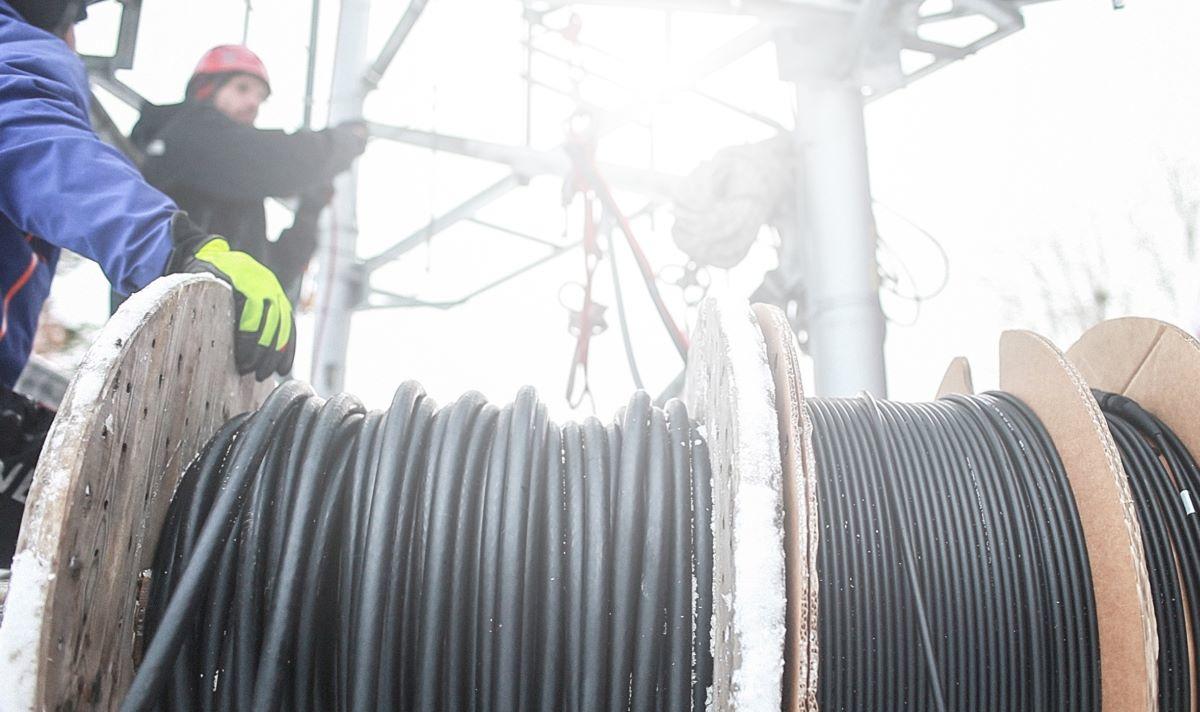
The technology enables data to travel 50% faster than in the optical cables that are typically deployed for 5G networks.
Image: Morfous / iStock / Getty Images
The UK’s leading telecoms provider BT has been trialing a new type of optical fiber that could significantly boost the performance of future 5G networks.
Called hollow core fiber, the technology enables data to travel 50% faster than in the optical cables that are typically deployed for 5G networks, according to Lumenisity, a spin-out company from Southampton University, which developed the new fiber.
Lumenisity and BT have been working together at the telecoms provider’s lab in Ipswich in eastern England, playing and testing with a ten-kilometer-long hollow fiber cable to find out exactly how the speed-up could be used in different scenarios. Unsurprisingly, reducing latency in 5G networks was found to be a key use case for the new technology.
SEE: 5G smartphones: A cheat sheet (free PDF) (TechRepublic)
Although BT is not yet at the stage of bulk buying hollow fiber cable to deploy it in real-life networks for customers, the company’s head of optical network research Andrew Lord explains that the past few months of experimenting have shown exciting results.
“We’ve done all sorts of things with that fiber, we’ve put it in ovens, we’ve shaken it, we’ve put it in cables to check its robustness,” Lord tells ZDNet. “And it’s shown remarkable properties, one of which is that it is 50% quicker than standard fiber. There are applications where that really makes sense, particularly in the 5G space where there is a latency limit to the equipment.”
A robust fiber network is intrinsically linked to the deployment of 5G. To unlock, as promised, innovative applications and services, next-generation networks will require higher bandwidth coupled with low latency – which is why providers are using small cells and base stations that are close to end-users to deliver faster speeds. But these, in turn, have to be connected to the central network, and this typically happens thanks to optical fiber.
Network providers like BT usually deploy what is known as single-mode optical fiber, which is made of solid strands of glass that carry information by channeling light signals emitted by laser transmitters. Travelling through glass, however, is marginally slower than through air, which means that the data carried by the light signals is slower than it could be.
On the other hand, as its name suggests, the hollow core fiber developed by Lumenisity has a hollow center filled with air, which runs the entire length of the cable and is encased in a ring of glass. The light signals, therefore, can travel very close to the ultimate speed of light – and take much less time to reach their destination than they would with standard fiber.
This will allow for lower latency for users, whether they are gaming, driving an autonomous vehicle, or using an IoT device; but it could also mean big changes for network providers, which will see their costs go down as the system gains in efficiency.
Due to the low latencies, use of hollow core in the Radio Access Network (RAN) could reduce mobile network costs by allowing more 5G antennas to be served from one exchange or cabinet.
“If the fiber gives you less of that latency, it means you can push your buildings further away, and have one building reaching more mobile end-points,” says Lord. “That means you can have less buildings, start to consolidate your resources and use your budget in different ways.”
SEE: 5G smartphones have arrived. But for many, the reason to upgrade is still missing
Hollow core fiber is already used by a restricted number of providers who are early adopters of the technology. Earlier this year, for instance, Lumenisity announced a partnership with euNetworks, which provides bandwidth infrastructure in Western Europe, in what was described as the first commercially available deployment of the technology.
The new fiber was used to connect the London Stock Exchange to telecoms provider Interxion to optimize high-frequency trading – in which even an extra microsecond lag can make all the difference in gains and losses. Users found that the new technology reduced latency by a third and constituted “significant” savings in financial trading applications.
Although BT is still some way off of commercializing hollow core fiber, Lord has high hopes for the new opportunities unlocked by the technology. A lot of latency-critical applications require an infrastructure that responds fast, he says, and as BT and Lumenisity continue experimenting, some more use cases and applications are expected to come up in the next few months.
So far, BT’s research team has overcome a “big engineering step” in demonstrating that it is possible to cable the new fiber and use it to connect customers, says Lord. Some challenges, however, remain in the way – not the least of which is scaling up the technology. “We have to make more kilometers of it and that’s not trivial,” says Lord. “We need technical solutions to solve that.”
